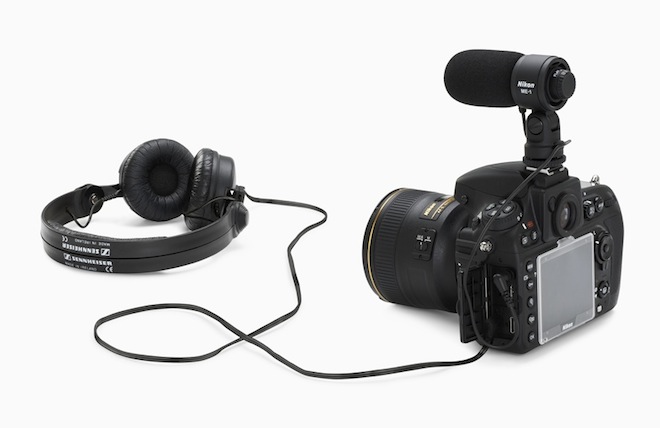Nikon could steal a few 5D Mark III pre-orders just by putting clearer information out and some sample clips. The Nikon D800 has a few tricks up its sleeve which may improve the soft moire ridden video quality we’ve seen so far from it.
All in all I think it is too early to count the D800 (and D4) out. Yes video samples have all without exception been very soft looking with resolution nowhere near that of true 1080p but then the 5D Mark III seems to have dropped the ball on image quality when it comes to resolution.
Whilst the 5D Mark III currently has the advantage of a better internal codec and reduced aliasing & moire, the D800 could still fight back.
Here’s how:
The crop modes
Sensor scaling (for example line skipping) on DSLRs is a process that results in resolution loss and moire if not handled properly.
A crop mode potentially changes how the sensor is scaled to 1080p because the crop results in a different effective sensor resolution.
For example, in FX mode the full frame sensor of the Nikon D800 at 36MP is 7360 pixels horizontal. Much of the moire and aliasing improvements on the 5D Mark III are expected to come from a new 3×3 binning mode because the 22MP count of the sensor is 3x 1920 horizontally and 3x 1080 vertically, making even basic scaling a lot cleaner.
Now the D800 has a strange 1.2x crop mode that Nikon haven’t explained properly yet – this could be for APS-H lenses but it could also be for cleaner video.
Here’s how the 1.2x crop effects scaling… Reduce the full 7360 horizontal resolution by 20% and you get 5888. Divide that by 3 for 3×3 binning and you get 1962 which is very close to 1920 and can be cropped only a tiny bit further in video mode for cleaner video if 3×3 binning is utilised. Interestingly, vertical resolution in 1.2x crop mode when cropped to 16:9 and divided by 3 is 1088!
1962 x 1088 is extremely close to clean 3×3 binning in 1.2x crop mode.
The FX sensor also does a DX (APS-C 1.5x crop) mode which changes scaling maths once again. So it will be interesting to see how image quality is affected by these modes.
That uncompressed HDMI output
Atomos seem to suggest you can get 10bit ProRes 4-2-2 from this but I’ve heard from Nikon themselves that the D800’s HDMI is 8 bit 4-2-2. Regardless, what I want to see most out of the HDMI output is better resolution which is true 1080p and not the soft crap you get in-camera. Contrary to popular belief, poor resolution also has a hand in the banding you get on large areas of subtle colour gradients in DSLR footage (like on blue skies) because those are the product of poor scaling and compression more than they are the product of an 8 bit colour space.
The HDMI fixes compression but does it fix scaling? Firstly, the extra bitrate will only help fine details if they are there in the first place. A different sensor mode, closer to a raw sensor tap may be active here and we already know it bypasses the encoder altogether because internal recording to card shuts off (only the lower resolution live view display continues).
If the sensor scales to 1080p in the same way as it does when internal encoding is active, then HDMI won’t be any better for resolution, just compression and colour sampling. But if the camera has extra horse power to utilise when not encoding (this is a big job) or a different sensor mode when running in HDMI mode – then we’re in for a massive treat.
Also battery life should be improved with the on-camera LCD turned off and internal encoder / card IO chip deactivated.
Fine noise grain via uncompressed HDMI
With such a fine pixel pitch and so many of them at 36MP, you get a very fine noise grain if you scale it to just 2MP for 1080p. In camera at just 24Mbit that will be smudged big-time at high ISOs. But with noise reduction turned off and the uncompressed HDMI going to 244Mbit ProRes, noise might take on a much more film-like grain rather than the macro-blocky splotches we’re used to on digital.
Currently the GH2 and Canon C300 have the best noise structure for 1080p – a lot of that is down to great sensor scaling as well as higher bitrates though.
Production firmware changes
With such a low level fundamental aspect as scaling, it is unlikely to differ in the final camera. But we must bear in mind that none of the D800 footage shot so far including Joy Ride was shot on the final version of the camera.



